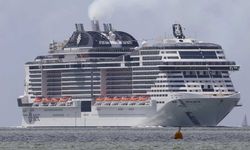The storm is now the strongest ever recorded to hit Florida’s Big Bend region, bringing the potential for widespread power outages and severe flooding across the Southeast. The area, already saturated from prior storms, is especially vulnerable to heavy rainfall.
The National Weather Service has issued warnings of life-threatening conditions, including “unsurvivable” storm surges in Apalachee Bay. Experts predict the storm will continue to produce dangerous storm surges, destructive winds, and flooding rainfall as it moves inland.
Hurricanes are categorized on the Saffir-Simpson Hurricane Wind Scale, which ranks storms from 1 to 5 based on their wind speed
The scale reflects the exponential increase in damage as wind speeds rise, meaning a strong Category 3 storm can cause up to 60 times more damage than a weak Category 1.
Rapid intensification of hurricanes like Helene has become more frequent due to warming ocean waters, which act as fuel for these powerful storms.
Climate data suggests that storms today are 25% more likely to reach the status of a major hurricane, with wind speeds of 111 mph or higher, than they were 40 years ago.






